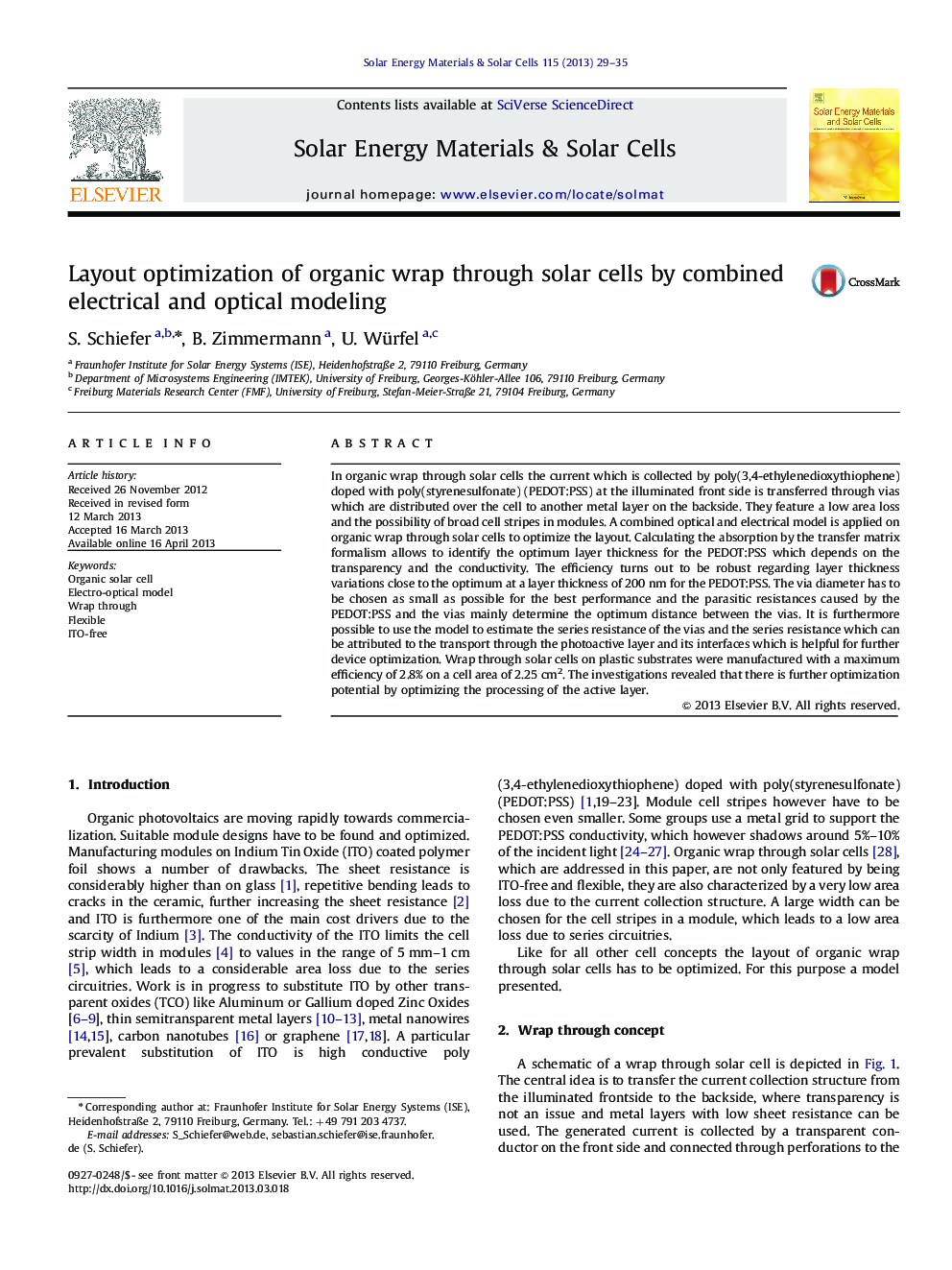| Article ID | Journal | Published Year | Pages | File Type |
|---|---|---|---|---|
| 78228 | Solar Energy Materials and Solar Cells | 2013 | 7 Pages |
•Organic wrap through solar cells with up to 2.8% efficiency on cell area of 2.25 cm2.•Electro-optical model to identify the optimum geometrical cell parameters.•Examination of the robustness of the efficiency in dependence of those parameters.•Splitting of experimentally accessible effective series resistance into components.•Localization of main contribution to the series resistance achieved.
In organic wrap through solar cells the current which is collected by poly(3,4-ethylenedioxythiophene) doped with poly(styrenesulfonate) (PEDOT:PSS) at the illuminated front side is transferred through vias which are distributed over the cell to another metal layer on the backside. They feature a low area loss and the possibility of broad cell stripes in modules. A combined optical and electrical model is applied on organic wrap through solar cells to optimize the layout. Calculating the absorption by the transfer matrix formalism allows to identify the optimum layer thickness for the PEDOT:PSS which depends on the transparency and the conductivity. The efficiency turns out to be robust regarding layer thickness variations close to the optimum at a layer thickness of 200 nm for the PEDOT:PSS. The via diameter has to be chosen as small as possible for the best performance and the parasitic resistances caused by the PEDOT:PSS and the vias mainly determine the optimum distance between the vias. It is furthermore possible to use the model to estimate the series resistance of the vias and the series resistance which can be attributed to the transport through the photoactive layer and its interfaces which is helpful for further device optimization. Wrap through solar cells on plastic substrates were manufactured with a maximum efficiency of 2.8% on a cell area of 2.25 cm2. The investigations revealed that there is further optimization potential by optimizing the processing of the active layer.
Graphical abstractFigure optionsDownload full-size imageDownload as PowerPoint slide
